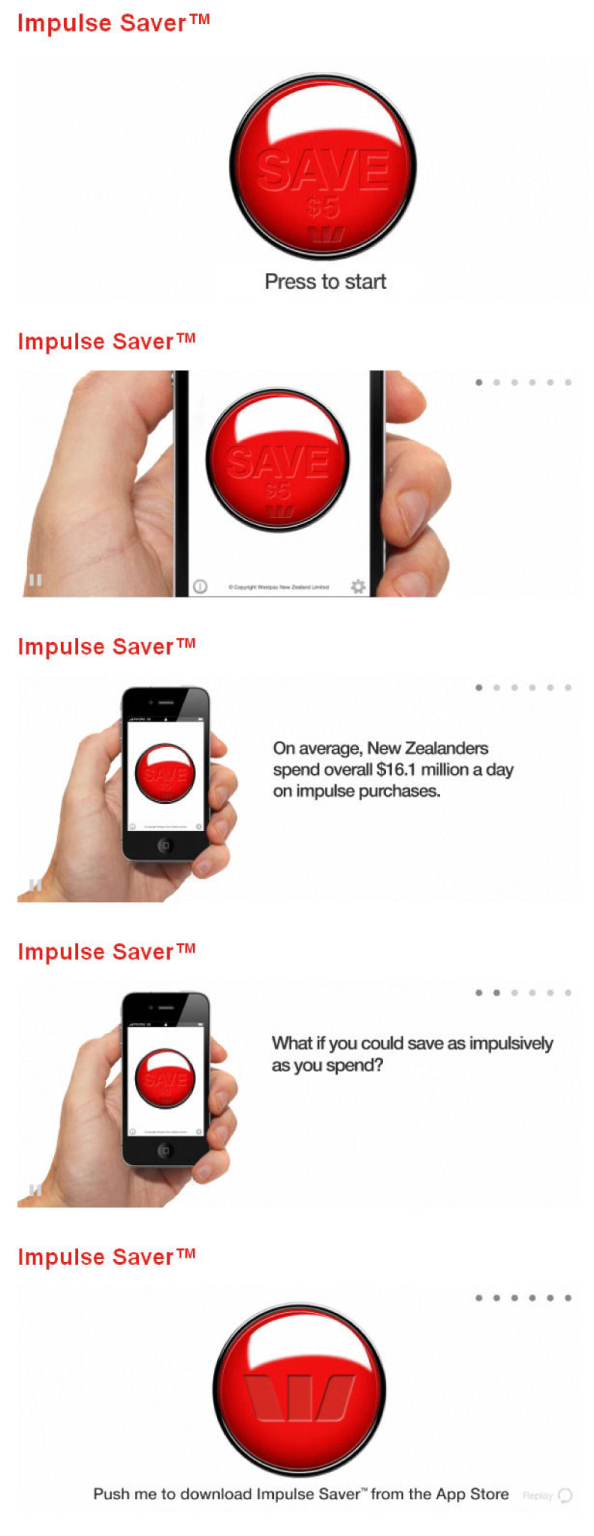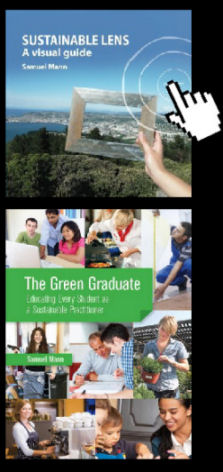 Yesterday I asked how could we market not-buying stuff? I explored three options: trying to be impervious to marketing; removing all marketing; and recognising the value of marketing. In the last of those I pointed to Rory Sutherland’s Ted Talk in which he proposes a big-red impulse saver button. Then I noticed a big red button appearing in my browser with “Save” written on it. It turns out that a couple of weeks ago Westpac launched “Impulse Saver“, developed in collaboration with Rory Sutherland (in case it gets lost, I’ve grabbed the imagery from Wespac’s advert below).
Yesterday I asked how could we market not-buying stuff? I explored three options: trying to be impervious to marketing; removing all marketing; and recognising the value of marketing. In the last of those I pointed to Rory Sutherland’s Ted Talk in which he proposes a big-red impulse saver button. Then I noticed a big red button appearing in my browser with “Save” written on it. It turns out that a couple of weeks ago Westpac launched “Impulse Saver“, developed in collaboration with Rory Sutherland (in case it gets lost, I’ve grabbed the imagery from Wespac’s advert below).
So, what would “Impulse Sustainability” look like? Here’s what the button might look like. It’s green (obviously) and “Save” is replaced with “Sustain”. A more subtle difference is that the $5 is missing below the word. In Westpac’s material they say that I can choose the amount I want to impulsively save – presumably the $5 is then added to the icon.
So the user of the Green Button could choose what they want to sustain. But there’s the problem. When I click Save, the money moves from one of my accounts to another – from a cheque account to a slightly less accessible savings account – the save action actually happens. It is also self limiting, I can’t keep clicking “Save” – eventually I’ll run out of money.
Unfortunately, neither of these things are true for sustainability. A sustainable action requires that something actually happens – a tree gets planted (at the most simple level). Clicking the button does not plant a tree – at best it might set in motion the process for someone else to plant a tree. On the other hand a sustainability action might be to not do an action, perhaps I could click it to not-buy a wasteful product. But this though does not actually do any good, unless the distraction on clicking the button stops me from doing something else bad, it’s not actually helping. I could be clicking merrily away, thinking I was being good, while jetting pointlessly around the world profligately consuming. At worst the Green Button could merely reduce guilt while not addressing sustainability.
Darn. I’ve just talked myself out of a good idea. I would like this to work though. Any thoughts on how we might use such a device to promote not-buying stuff?


Todd Cochrane
April 17, 2011
I guess this still boils down to the thought that currency really has no value other than “more is better”, I wonder if we change currency to include many values , if we could run economies with such a system, the multi-value coin, 10 “sustains “and 10 “consumes” with 5 “efficiencies”, for example, I guess not?